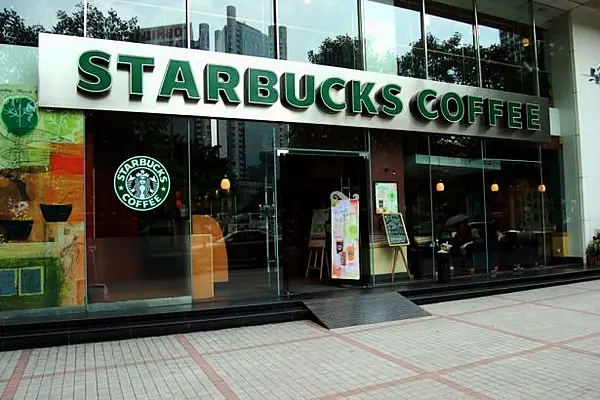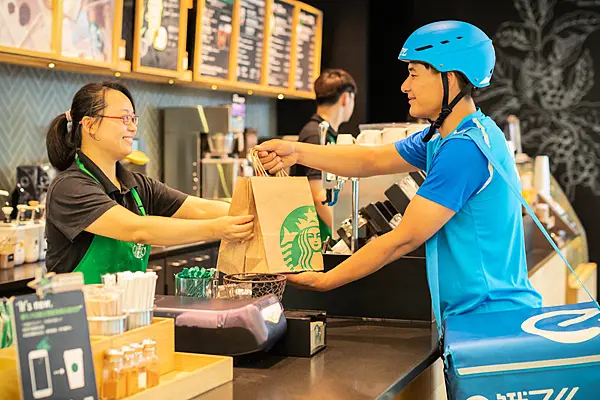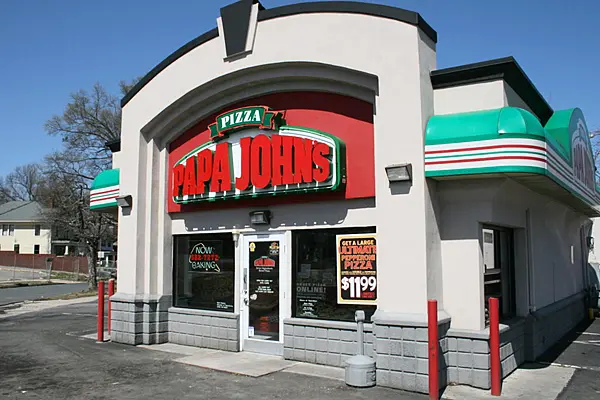Starbuck posted earnings that topped analysts’ estimates as new food items and digital efforts like mobile ordering helped its U.S. business defy a restaurant-industry slowdown.
Profit rose to 56 cents a share, excluding some items, in the most recent quarter. That topped analysts’ average prediction of 55 cents.
The world’s largest coffee-shop operator has been fueling sales with technology like mobile order and pay, which speeds service at cafes. The company also has introduced new drinks, such as coconut-milk mocha macchiatos and cold-brew beverages, while widening and improving its food selection. Same-store sales rose 5 percent in the Americas region, matching the average estimate of analysts polled by Consensus Metrix.
“There was some thought that they might not be able to perform as well as they did in the quarter,” said Jack Russo, an analyst at Edward Jones. “Some other really high-profile consumer companies have been reporting some slowing down.”
The company also is funneling more of its cash back to investors. Starbucks raised its quarterly dividend to 25 cents a share from 20 cents. It will be paid Dec. 2 to shareholders of record as of Nov. 17.
The stock was little changed at $51.80 at 5:57 p.m. in late trading in New York. Through Thursday’s close, Starbucks had lost 14 percent this year.
Revenue Gains
Revenue climbed 16 percent to $5.71 billion in Starbucks’s fiscal fourth quarter, which ended Oct. 2, the Seattle-based company said in a statement Thursday. Analysts estimated $5.69 billion, on average.
Mobile payments accounted for 25 percent of domestic transactions, up from 20 percent a year ago, as the company offers new features such as favorite locations and orders, according to Chief Operating Officer Kevin Johnson. Rewards membership also rose from last year.
In the U.S., where Starbucks has about 12,900 cafes, the latte seller is trying to improve the quality and variety of its food. Earlier this year, the company invested in Italian bakery Princi, which sells pastries, pizza and pasta in Europe. In some locations, the company has partnered with local bakers to make fare such as red-velvet cheesecake brownies in Chicago.
“Food continues to be a big contributor for both traffic and ticket” in the U.S., Chief Financial Officer Scott Maw said in an interview.
The company’s packaged-goods business, which includes bottled coffees and Keurig-brand K-cups, is off to a strong start in the current quarter, executives said during a conference call. Starbucks will introduce ready-to-drink Teavana beverages across the U.S. next year.
International Efforts
Internationally, the company is focused on boosting sales with new locations and enhanced mobile capabilities in China. Starbucks recently promoted Belinda Wong to lead its business in China, where it plans to double its locations to about 5,000 cafes by 2021. Chief Executive Officer Howard Schultz has said Starbucks’ China presence could rival the U.S. over time. Fourth-quarter same-store sales jumped 6 percent in the Asian nation.
Globally, same-store sales rose 4 percent. Analysts had projected 4.8 percent. Sales by that measure increased 1 percent in the China and Asia Pacific unit, and fell 1 percent in Europe, the Middle East and Africa. The Asia figure was pulled down by weakness in Japan, Maw said.
Starbucks is going big with its upscale brand, dubbed Reserve, to attract more sophisticated customers and better compete with regional chains. It plans to open as many as 1,000 Reserve cafes globally that will tout small-lot coffee and Princi food.
“The market is a little bit fickle right now,” Russo said. “There’s a lot of nervousness. We’ve got to get this election behind us.”









